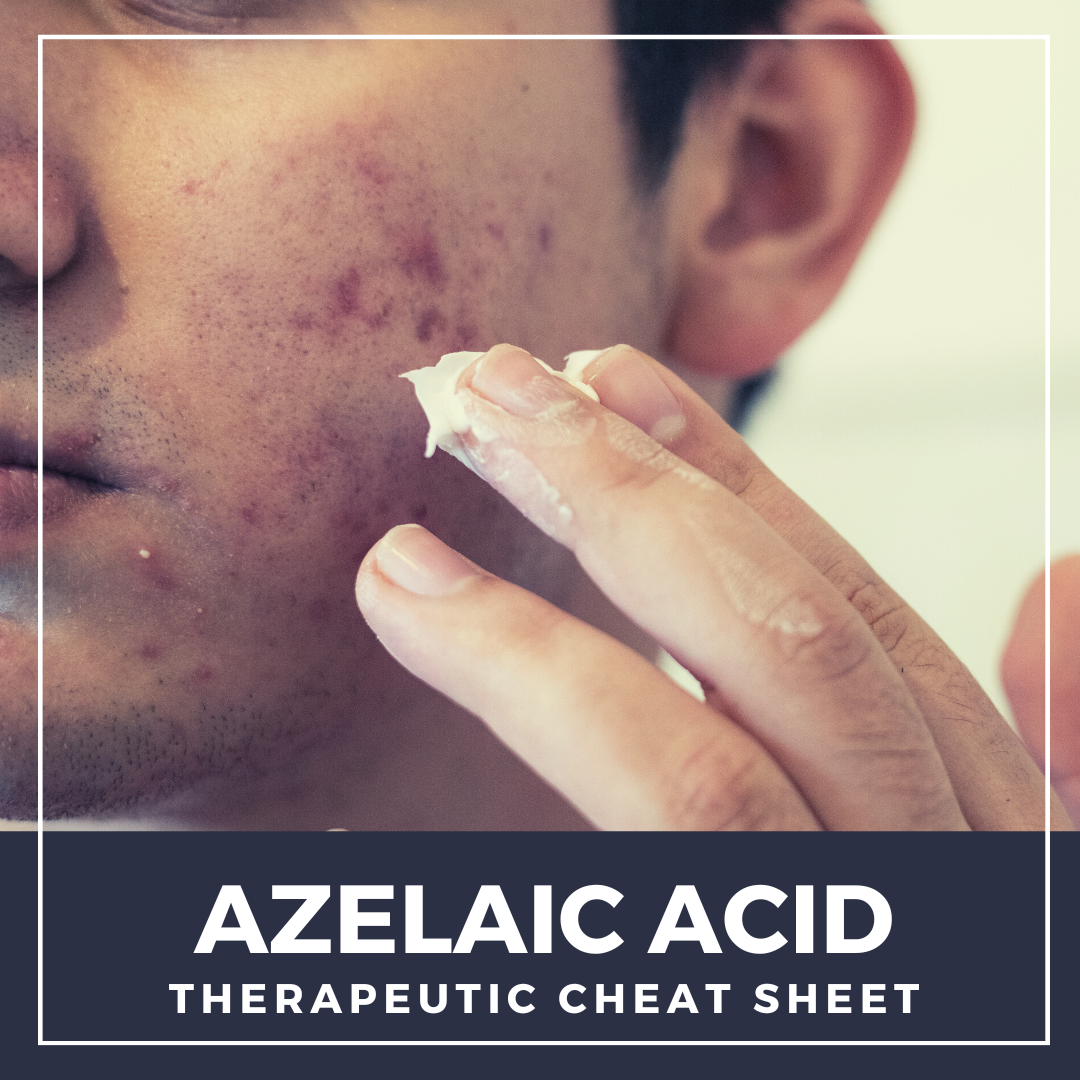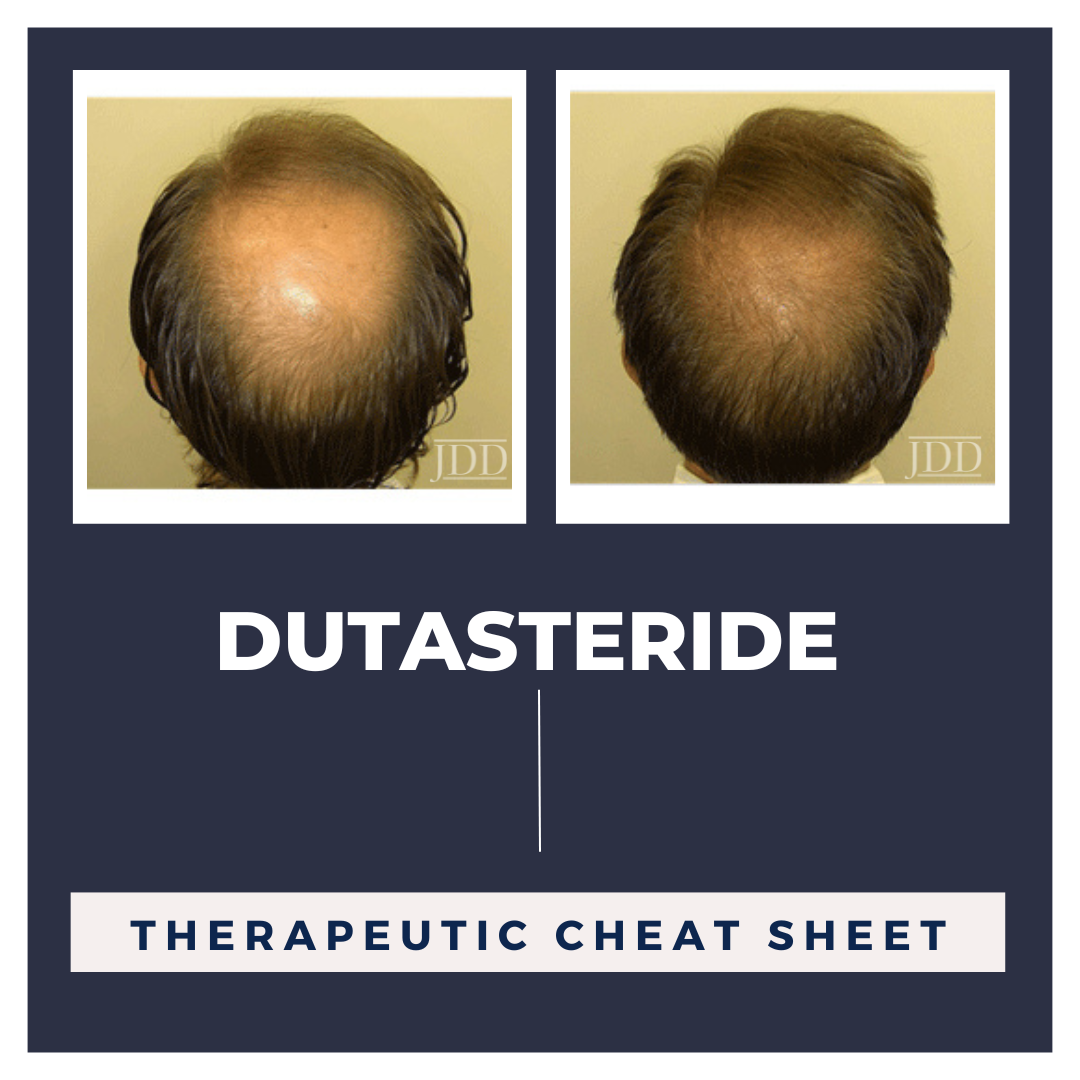Azelaic Acid Therapeutic Cheat Sheet
 Azelaic acid is a topical therapeutic agent which is FDA approved to treat papules and pustules of mild to moderate rosacea and mild to moderate acne vulgaris. It was first approved by the FDA in 1995 and since its approval, has been used for many off-label conditions including disorders of hyperpigmentation. Its utility in various conditions can be attributed to its anti-microbial, anti-inflamm …
Azelaic acid is a topical therapeutic agent which is FDA approved to treat papules and pustules of mild to moderate rosacea and mild to moderate acne vulgaris. It was first approved by the FDA in 1995 and since its approval, has been used for many off-label conditions including disorders of hyperpigmentation. Its utility in various conditions can be attributed to its anti-microbial, anti-inflamm …
 Azelaic acid is a topical therapeutic agent which is FDA approved to treat papules and pustules of mild to moderate rosacea and mild to moderate acne vulgaris. It was first approved by the FDA in 1995 and since its approval, has been used for many off-label conditions including disorders of hyperpigmentation. Its utility in various conditions can be attributed to its anti-microbial, anti-inflamm …
Azelaic acid is a topical therapeutic agent which is FDA approved to treat papules and pustules of mild to moderate rosacea and mild to moderate acne vulgaris. It was first approved by the FDA in 1995 and since its approval, has been used for many off-label conditions including disorders of hyperpigmentation. Its utility in various conditions can be attributed to its anti-microbial, anti-inflamm … 

 Next Steps in Derm and the Journal of Drugs in Dermatology, in partnership with the Dermatology Education Foundation (DEF) and Physicians Resources, interviewed Dr. Hilary Baldwin, a board-certified dermatologist and medical director of the Acne Treatment & Research Center in Morristown, NJ and Brooklyn, NY. With the heavy acne tool box these days, how do you pick which medications to use? …
Next Steps in Derm and the Journal of Drugs in Dermatology, in partnership with the Dermatology Education Foundation (DEF) and Physicians Resources, interviewed Dr. Hilary Baldwin, a board-certified dermatologist and medical director of the Acne Treatment & Research Center in Morristown, NJ and Brooklyn, NY. With the heavy acne tool box these days, how do you pick which medications to use? …  Next Steps in Derm, in partnership with ODAC Dermatology, Aesthetic & Surgical Conference, interviewed Dr. Yasmine Kirkorian, chief of dermatology at Children’s National Hospital. When treating children, clinicians not only have the child as the patient but also the parent. Watch and learn Dr. Kirkorian’s top tips for engaging with parents of pediatric patients. Hear why she says letting …
Next Steps in Derm, in partnership with ODAC Dermatology, Aesthetic & Surgical Conference, interviewed Dr. Yasmine Kirkorian, chief of dermatology at Children’s National Hospital. When treating children, clinicians not only have the child as the patient but also the parent. Watch and learn Dr. Kirkorian’s top tips for engaging with parents of pediatric patients. Hear why she says letting …  The November issue of the Journal of Drugs in Dermatology (JDD) focuses on lasers, lights sources, and devices featuring original articles and case reports exploring topics such as combination of platelet rich plasma and 1550 nm fractional laser for androgenetic alopecia, safety of combination laser procedures in single clinic visit, efficacy of a fractionated 1540 nm erbium glass laser in the tre …
The November issue of the Journal of Drugs in Dermatology (JDD) focuses on lasers, lights sources, and devices featuring original articles and case reports exploring topics such as combination of platelet rich plasma and 1550 nm fractional laser for androgenetic alopecia, safety of combination laser procedures in single clinic visit, efficacy of a fractionated 1540 nm erbium glass laser in the tre …  Androgenic alopecia (AGA) is one of the most common forms of hair loss and represents a frequently faced disabling concern in dermatology visits. Targeting the 5α-dihydrotestosterone (DHT) pathway has been shown to be an efficacious mechanism of action, with finasteride being the only systemic FDA-approved drug to treat male AGA. Recently, its sister drug, dutasteride, has been increasingly utili …
Androgenic alopecia (AGA) is one of the most common forms of hair loss and represents a frequently faced disabling concern in dermatology visits. Targeting the 5α-dihydrotestosterone (DHT) pathway has been shown to be an efficacious mechanism of action, with finasteride being the only systemic FDA-approved drug to treat male AGA. Recently, its sister drug, dutasteride, has been increasingly utili …